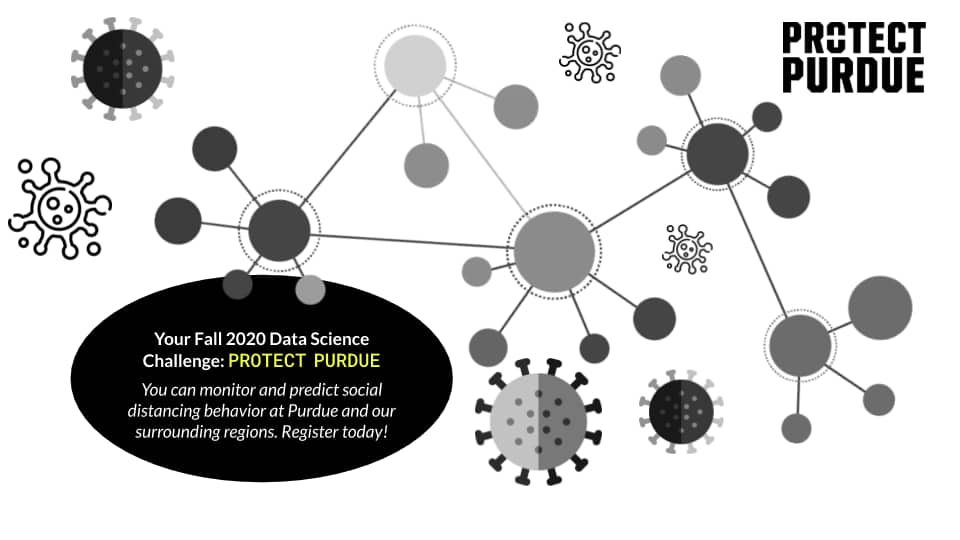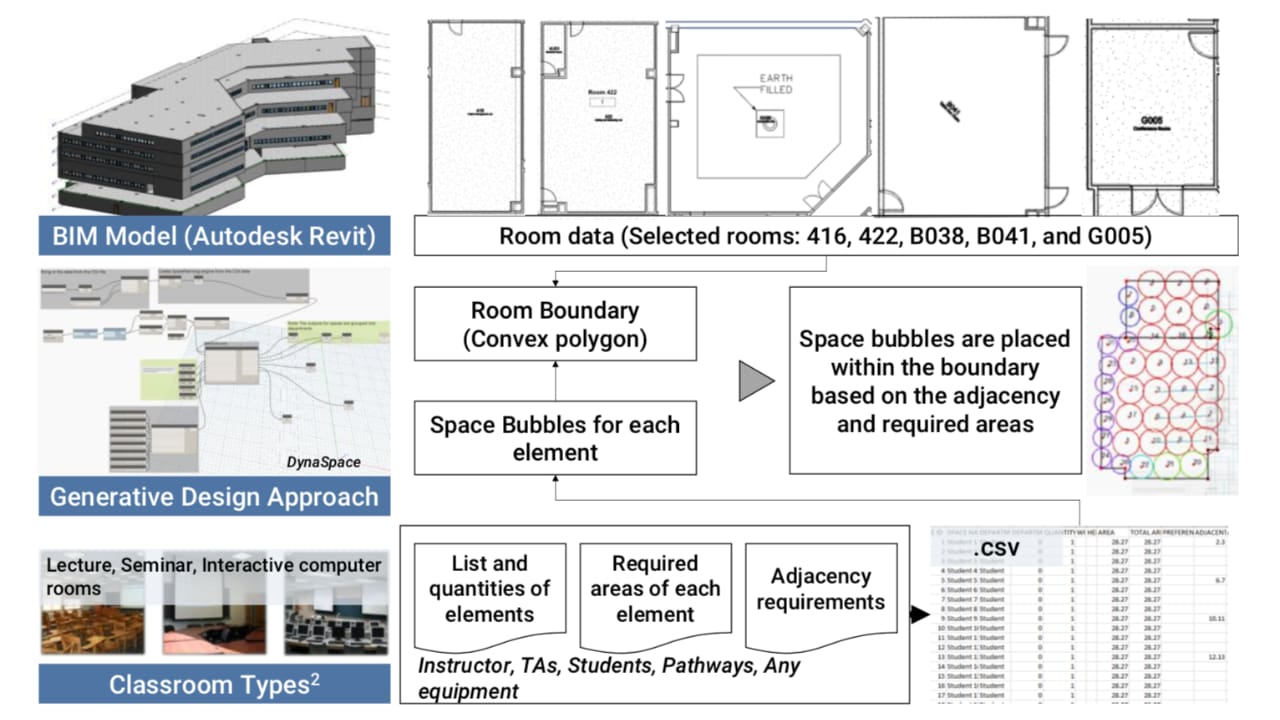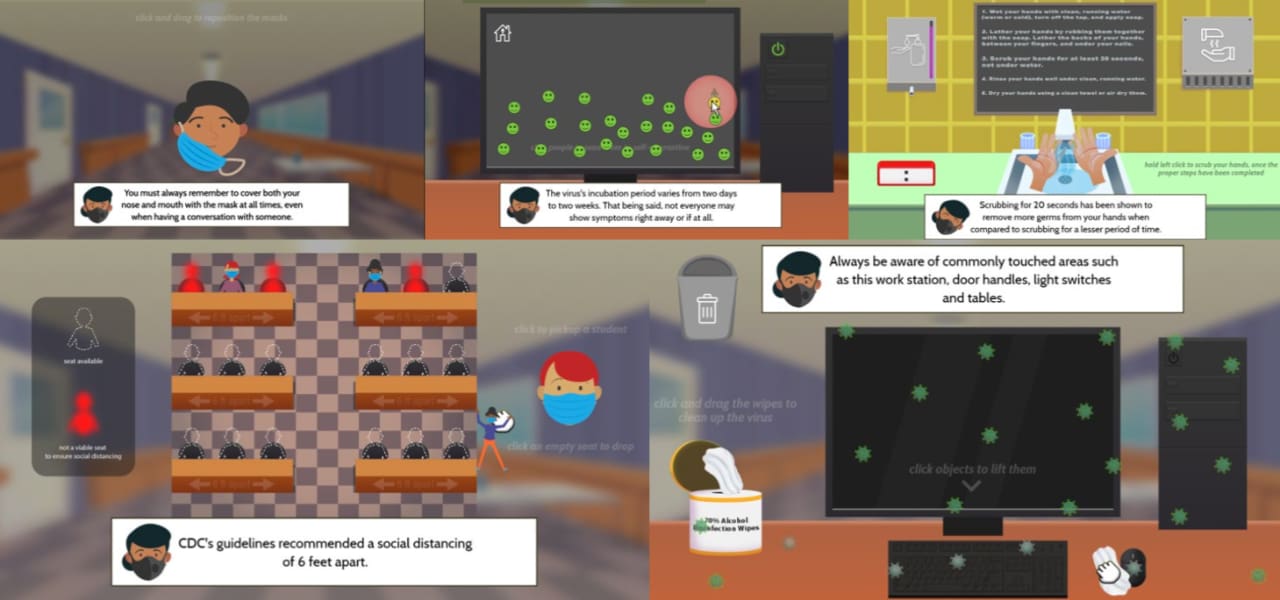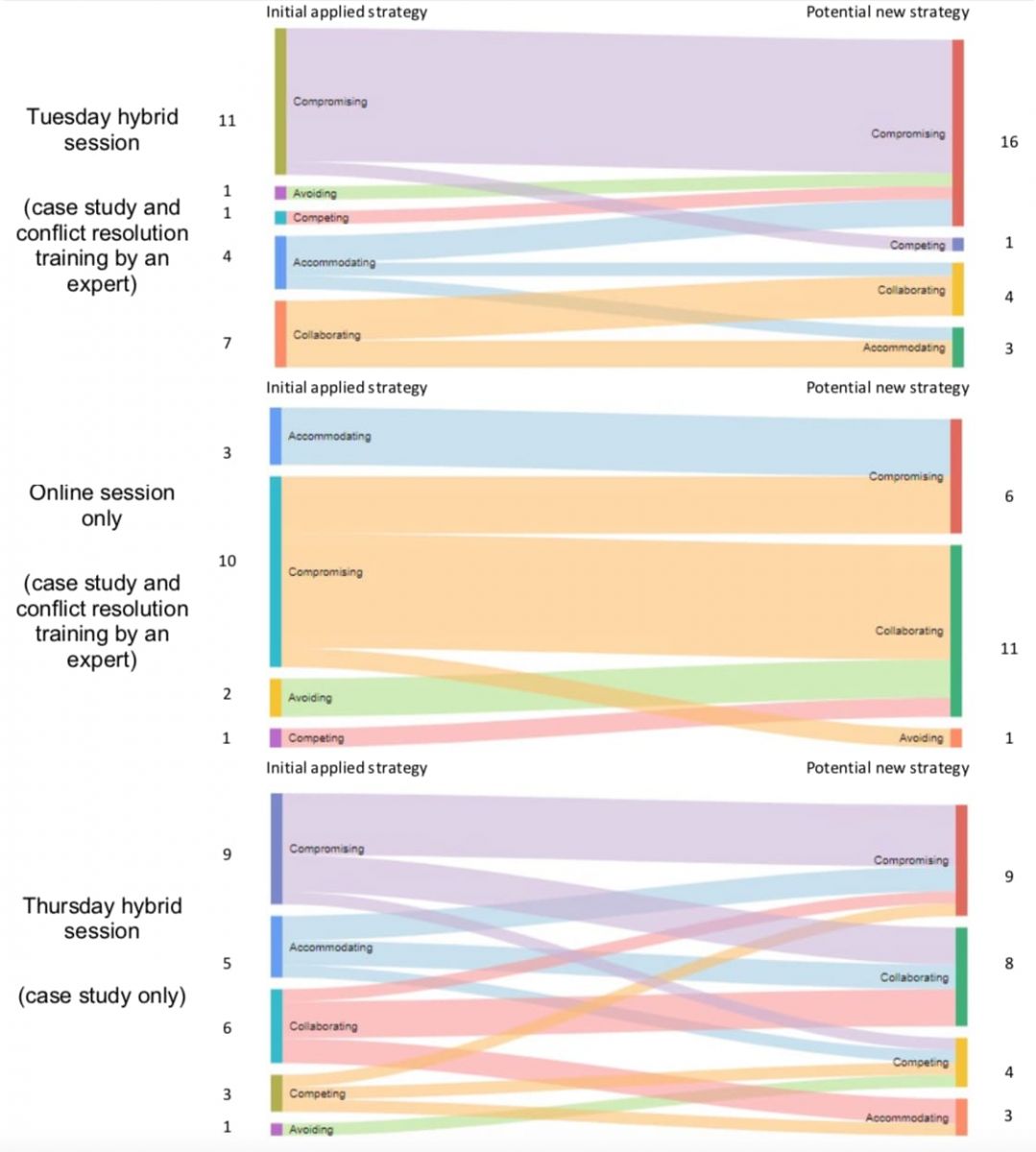Several Purdue Polytechnic professors participated in short-term research projects related to how universities adapted to the pandemic.
Last summer, the Offices of the Provost, Executive Vice President for Research and Partnerships, and Treasurer invited faculty members across campus to submit research proposals for innovative, focused projects on COVID-19-related research with direct impact on a university community. The Protect Purdue Innovations Faculty Grants were intended to address important scientific questions related to the novel coronavirus with a specific emphasis on knowledge gaps in Purdue’s response.
The Polytechnic faculty who participated included Sabine Brunswicker, professor of technology leadership and innovation, Soowon Chang, assistant professor of construction management technology, Dominic Kao, assistant professor of computer and information technology, and Alejandra Magana, the W.C. Furnas Professor in Enterprise Excellence.
Using data science to predict social movements
Brunswicker worked with Matt Harris, IronHacks platform developer, and Elizabeth Thompson, research fellow, and other team members and fellows in Purdue’s Research Center for Open Digital Innovation (RCODI) on “A COVID-19 Data Science Challenge to Predict Social Movements in the Greater West-Lafayette Area.”
The team built upon theories and practice of collective intelligence and platform-enabled problem-solving to monitor and predict foot traffic at public places like restaurants and shops in Tippecanoe County. Increased foot traffic in public places suggests a normalization of daily routines, but it also indicates an increased risk of spreading coronavirus due to social crowding in closed buildings.
“Predicting social movements and foot traffic is a challenging endeavor given the complexity of human decision making and variability in response to policies like social distancing, one of the key pillars of Protect Purdue,” according to the research team.
 The project’s goal was to design and implement a data science challenge for Purdue IronHacks, an open data hacking competition, in which participants monitored and predicted foot traffic at 1,804 local places of interest using historical data about social movements, social distancing, policy interventions and COVID-19 incident data. The research team reported three accomplishments:
The project’s goal was to design and implement a data science challenge for Purdue IronHacks, an open data hacking competition, in which participants monitored and predicted foot traffic at 1,804 local places of interest using historical data about social movements, social distancing, policy interventions and COVID-19 incident data. The research team reported three accomplishments:
They produced significant technological artifacts for crowd-based social epidemiology. They built the BigQuery database with linked and granular spatial-temporal data for modeling social movement. The team integrated the database into their Data Science platform.
“It includes a state-of-the-art data science workspace, a Jupyter lab, along with a range of additional features,” the researchers said. “Without this IronHacks platform and our BigQuery database, data scientists would be unable to model social movements during the COVID-19 pandemic.”
They developed a variety of data science models to predict foot traffic for week 44 in 2020, using their spatial-temporal data from week 10 to week 44. They explored the models in a short time frame and evaluated their accuracy.
“We have learned that the most ‘explainable’ models not only produce accurate predictions but also facilitate the interpretation of the models from an end-user point of view,” according to the research team’s report.
The researchers also recruited over 500 COVID-19-oriented data scientists to their IronHacks platform and collected, with consent, significant data about their motivations, platform engagement and problem-solving behaviors.
“As of today, we have little understanding of the complex socio-cognitive processes and motivations that allow a large crowd of individuals to tackle societal challenges like COVID-19,” the researchers said. “Using this data, we are building statistical models to classify types of data scientists, to predict their productivity and understand the antecedent factors of successful exploration and implementation of new data science models.”
The research team plans to continue analyzing the data they’ve collected and to publish results from their initial studies. They plan to grow the community of data scientists with interest in social epidemiology.
Using building information modeling (BIM) to reconfigure spaces for social distancing

Soowon Chang and Malav Haresh Doshi, a graduate research assistant in the Polytechnic’s School of Construction Management Technology, worked on the project “Generative Space Layout for Responding Occupants’ Health and Space Utilization.” Noting that changing the layout of classrooms in school buildings for social distancing is a manual process that often decreases room capacity, Chang and Doshi studied the use of building information modeling (BIM) to help with decision-making when reconfiguring spaces during the current pandemic or future emergency situations.
The researchers devised a methodological framework that integrates BIM with a generative design approach using Autodesk Revit software and a generative space layout script in DynaSpace. They modeled Knoy Hall using the BIM platform and selected several classrooms to test the proposed methodology.
“BIM-integrated generative approach enables facility managers and space planners to explore diverse layout options and conditions in a risk- free environment,” the researchers said. “In addition, rapid and efficient decision-making will enable facility managers to save time and efforts.”
Chang plans to extend the methodological framework devised in this research to different subjects and scales. Generative adaptations of space layout can be applied to construction site reconfigurations based on schedule progress, for example.
Teaching good pandemic hygiene with a game

For the project “Gamification of Hygienic Best Practices to Help Prevent the Spread of COVID-19,” Dominic Kao and his team developed a web-based game and video that teach hygienic best practices. Each were iteratively developed with a team of game developers, game designers, health experts and educational technology experts. Using these as tools, he then conducted experiments to measure anxiety about COVID-19, self-efficacy beliefs regarding individual ability to help prevent the spread of COVID-19, general knowledge about COVID-19, knowledge about COVID-19 workspace sanitization, and COVID-19 hygienic-positive attitudes. Kao also measured actual cleaning behavior in the experiments.
In two three-week experiments, Kao and his team observed that participants playing the game had higher intrinsic motivation compared to participants who watched the video. After playing the game or watching the video, subjects saw a sustained rise in COVID-19 self-efficacy beliefs, positive hygienic attitudes and knowledge. Subjects’ COVID-19 anxiety and cleaning behaviors were relatively unchanged. Kao said that their work demonstrates game-based learning can be an effective approach for teaching COVID-19 hygienic knowledge, for improving COVID-19 hygienic self-efficacy, and for fostering COVID-19 hygienic positive attitudes and is more intrinsically motivating than video-based learning.
Measuring the effectiveness of live training
 Alejandra Magana collaborated with James Dworkin, professor of management, and Tugba Karabiyik, an industrial engineering lecturer, on “Teamwork Conflict Management and Resolution during the COVID-19 Pandemic.”
Alejandra Magana collaborated with James Dworkin, professor of management, and Tugba Karabiyik, an industrial engineering lecturer, on “Teamwork Conflict Management and Resolution during the COVID-19 Pandemic.”
Three main changes were made in the teaching process of a large-class systems analysis and design course to support teamwork during the pandemic:
Offering a fully online section of the course in conjunction with the hybrid (in-person socially distanced) section of the course
Facilitating online teamwork sessions for all students (online and hybrid) scheduled during in- class time throughout the semester
Providing a conflict-resolution training in the middle of the semester to help teams overcome potential collaboration challenges
For this research, the team focused on measuring the impact of the third change, a new component of their instructional design. Students in the course’s online and Tuesday sections received live conflict resolution training delivered by an expert in labor relations in the organization, including collective bargaining, negotiations, and dispute resolution. Students in the course’s Thursday section did not receive this live training.
Literature in conflict resolution suggests that the collaborating conflict resolution strategy is the most desirable as it maximizes concern for self and concern for others. This is closely followed by compromising, which exhibits concern for self and others but not at the degree of those of the collaborating conflict resolution mode. Students’ conflict resolution strategies consisted of instances when students experienced some form of conflict in the past (initially applied strategy in Figure 3) and a reflection of how that strategy might have changed if they encountered the same situation after and receiving conflict resolution training (potentially changed strategy in Figure 3).
The researchers found an overall increase in the number of students who would apply a collaborating conflict resolution strategy among the distance students, while there was an overall increase in the number of students who would apply a compromising conflict resolution style among the face-to-face students who received the conflict-resolution training. This is in stark contrast to the group that did not receive the expert training, where there were no notable changes in overall numbers in terms of conflict resolution styles.
